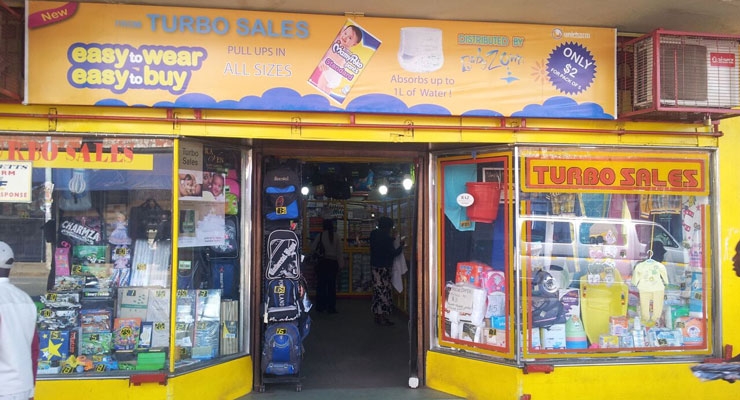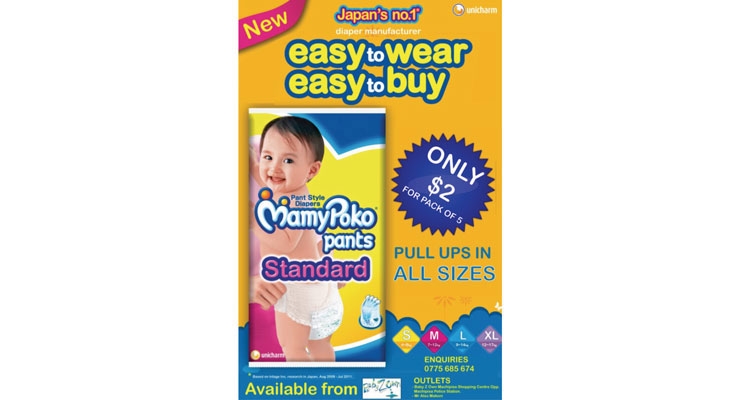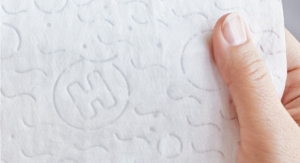Raymond Chimhandamba, Contributor09.07.18
In 2011, after about 12 years of working and traveling in the Sub-Saharan African region and Indian Ocean Islands, I joined an FMCG organization that was in the hygiene sector as business development director for Africa. My role was to grow the African business, particularly the “Base of the Pyramid” or low income opportunities. My key deliverables in the short term included appointing partners in the key markets of Nigeria, Zambia and Angola. With 12 years of African experience behind me, I had strong networks across the region so I achieved this with a fair amount of ease. I had some fairly radical recommendations for Nigeria which were not respond to warmly and I appointed a distributor in Angola. I was achieving above budget margins in Zambia. I was also looking at options to grow the adult diapers category with our distribution partners within the neighboring countries. I believed that there was a good opportunity there. But all in all, the chemistry was not quite right, so in less than a year we mutually agreed to part ways. But in that short time two things happened to me. I had learned two very key lessons that in a sense changed my life.
The first lesson was learning how girls in Africa are disadvantaged in achieving their full potential in school because of a simple issue of inadequate sanitary protection, which made it necessary for them to miss three or four days of school every month. The other lesson was that disposable diapers, among all other FMCG products or categories, offered one of the best opportunities for exponential growth in the Africa region. I was convinced about this point. So convinced that I told myself that with more than a decade of experience working, traveling, launching and building brands in Africa, it was time to chart my own course and start my own diaper distribution business. I traded in my luxury Audi A6 for a one-ton Mitsubishi van to prepare myself for my new mission.
The drivers for the growth in the disposable diaper category range from reasons relating to the shear convenience of the product and efficacy in keeping the baby’s bottom dry, even after the baby has passed urine, which a cloth diaper cannot do, to the higher disposable incomes of households within the region. More and more mothers are also working, making the need to wake up less often during the night really paramount, again the efficacy of a quality disposable diaper beats the cloth diaper hands down. It is also a fact that with the increased pace of urbanization, the governments cannot keep up with adequate provision of municipal services like water, electricity, waste collection, etc. Going without water for extended periods of time makes it difficult to work with cloth diapers. You have to keep the soiled nappy for hours before washing it, never mind the smell, making it really hard to keep the cloth diaper stain free and with a clean look for long. And bear in mind the electricity to iron the cloth diaper to kill germs is also not reliable, adding yet another layer of inconvenience.
I started off by importing and selling premium quality B grade diapers manufactured in Turkey. The brand was Molfix. These B grade diapers are a combination of A grade overruns and diapers rejected on the production line during manufacturing owing to a small issue that could be corrected. In a lot of cases it was a case of a missing tape or some other minor issue. I had trained my team to stick these on. My supplier would throw in an additional roll of diaper tape with big orders. I was buying my product from South Africa. In the next one-and-half years I must have dealt with every medium to big diaper manufacturer in Europe and Asia.
For my retail outlet, I started by renting one portion of a shop to reduce my costs. The shop was right in the middle of a low to middle income residential area. This was in a small town, just 40km outside Harare, the capital, called Chitungwiza. The shared shop gave me the advantage that I did not have to create traffic from scratch. Women were already coming to this shop to buy cooking oil, milk, sugar, etc., almost on a daily basis. If they were holding a baby we just simply convinced them to try our product. If they were not ready to buy we were happy to give them a sample, one single diaper, to go and try. That way we knew we were giving a consumer who was a 100% user of the product and if it was good, we knew she would return tomorrow. On day one, October 1, 2011, after a good day’s work, we made $3. By the end of the week we were making an average of about $21 per day. By the end of the month we were averaging about $1500 and were still getting new inquiries. By month three, we were making about $3000 a month and getting more confident.
In January 2012 we had got quite confident on what we were doing, and we were ready to offer our customers something better. An A grade product in original packaging. We settled to working with Unicharm. I managed to get Unicharm into four markets in three months (Zimbabwe, Ghana, Kenya and Tanzania). What I liked about Unicharm was their pants diapers. They are offering emerging markets a premium product, a pull up diaper format in all sizes from small to extra-large. It resonated perfectly with my thinking. I was offering a quality product to low end consumers at a good price. I was selling this product “by the piece” or in small packs in order to make it affordable. They were “easy to wear, easy to buy.” Bigger packs were available of course for the more affluent consumer who could afford it. Having a quality pants-type diaper was a very important differentiator in a market that had cheap diapers that were cheaper and ineffective in doing what they were supposed to do.
My ability to sell by the piece also set me apart me from the modern trade supermarket. In the process, my team and I also learned from our consumers and customers. We were keen learners. We learned that very few products are scrutinized by the purchaser as much as a baby diaper. We learned that cheap and nasty diapers are not the enemy. Embrace them. It was easier to convince a mother who was already using a cheap and nasty diaper to upgrade than to convince a mother who was not using diapers at all. We learned what was important to the consumer. And in what order. We learned that parents are happy to buy their babies leather shoes even though they knew the child will never walk in them! In other words, those shoes will be small before the child is walking age. But yes…the parents will go ahead anyway. These lessons, and many, many others, were very important in shaping and growing our understanding of the consumers’ psyche, habits, purchasing trends, motivators and so on. Interestingly, about two years later, Kimberly-Clark launched a jumbo pack that had single diapers individually wrapped. This was available in modern trade or the informal channels alike. It was a good move indeed that paid off for them.
By July 2013 the Zimbabwe market was slowing down. Cash was hard to come by, consumers were not getting paid on time. By year’s end, it was a snail pace. Bigger retailers with deep pockets could survive it. Hustlers like me just fell by the wayside. By the second quarter 2014, with a daughter in her first year of university and another one in school, it was time to pack up. But I banked the lessons. I went back to corporate, armed with a much higher tolerance for stress than my peers could ever imagine. My finance and leadership skills I think were sharper. Today I believe that I am ready to share and sell my experience to improve the sector.
The first lesson was learning how girls in Africa are disadvantaged in achieving their full potential in school because of a simple issue of inadequate sanitary protection, which made it necessary for them to miss three or four days of school every month. The other lesson was that disposable diapers, among all other FMCG products or categories, offered one of the best opportunities for exponential growth in the Africa region. I was convinced about this point. So convinced that I told myself that with more than a decade of experience working, traveling, launching and building brands in Africa, it was time to chart my own course and start my own diaper distribution business. I traded in my luxury Audi A6 for a one-ton Mitsubishi van to prepare myself for my new mission.
The drivers for the growth in the disposable diaper category range from reasons relating to the shear convenience of the product and efficacy in keeping the baby’s bottom dry, even after the baby has passed urine, which a cloth diaper cannot do, to the higher disposable incomes of households within the region. More and more mothers are also working, making the need to wake up less often during the night really paramount, again the efficacy of a quality disposable diaper beats the cloth diaper hands down. It is also a fact that with the increased pace of urbanization, the governments cannot keep up with adequate provision of municipal services like water, electricity, waste collection, etc. Going without water for extended periods of time makes it difficult to work with cloth diapers. You have to keep the soiled nappy for hours before washing it, never mind the smell, making it really hard to keep the cloth diaper stain free and with a clean look for long. And bear in mind the electricity to iron the cloth diaper to kill germs is also not reliable, adding yet another layer of inconvenience.
I started off by importing and selling premium quality B grade diapers manufactured in Turkey. The brand was Molfix. These B grade diapers are a combination of A grade overruns and diapers rejected on the production line during manufacturing owing to a small issue that could be corrected. In a lot of cases it was a case of a missing tape or some other minor issue. I had trained my team to stick these on. My supplier would throw in an additional roll of diaper tape with big orders. I was buying my product from South Africa. In the next one-and-half years I must have dealt with every medium to big diaper manufacturer in Europe and Asia.
For my retail outlet, I started by renting one portion of a shop to reduce my costs. The shop was right in the middle of a low to middle income residential area. This was in a small town, just 40km outside Harare, the capital, called Chitungwiza. The shared shop gave me the advantage that I did not have to create traffic from scratch. Women were already coming to this shop to buy cooking oil, milk, sugar, etc., almost on a daily basis. If they were holding a baby we just simply convinced them to try our product. If they were not ready to buy we were happy to give them a sample, one single diaper, to go and try. That way we knew we were giving a consumer who was a 100% user of the product and if it was good, we knew she would return tomorrow. On day one, October 1, 2011, after a good day’s work, we made $3. By the end of the week we were making an average of about $21 per day. By the end of the month we were averaging about $1500 and were still getting new inquiries. By month three, we were making about $3000 a month and getting more confident.
In January 2012 we had got quite confident on what we were doing, and we were ready to offer our customers something better. An A grade product in original packaging. We settled to working with Unicharm. I managed to get Unicharm into four markets in three months (Zimbabwe, Ghana, Kenya and Tanzania). What I liked about Unicharm was their pants diapers. They are offering emerging markets a premium product, a pull up diaper format in all sizes from small to extra-large. It resonated perfectly with my thinking. I was offering a quality product to low end consumers at a good price. I was selling this product “by the piece” or in small packs in order to make it affordable. They were “easy to wear, easy to buy.” Bigger packs were available of course for the more affluent consumer who could afford it. Having a quality pants-type diaper was a very important differentiator in a market that had cheap diapers that were cheaper and ineffective in doing what they were supposed to do.
My ability to sell by the piece also set me apart me from the modern trade supermarket. In the process, my team and I also learned from our consumers and customers. We were keen learners. We learned that very few products are scrutinized by the purchaser as much as a baby diaper. We learned that cheap and nasty diapers are not the enemy. Embrace them. It was easier to convince a mother who was already using a cheap and nasty diaper to upgrade than to convince a mother who was not using diapers at all. We learned what was important to the consumer. And in what order. We learned that parents are happy to buy their babies leather shoes even though they knew the child will never walk in them! In other words, those shoes will be small before the child is walking age. But yes…the parents will go ahead anyway. These lessons, and many, many others, were very important in shaping and growing our understanding of the consumers’ psyche, habits, purchasing trends, motivators and so on. Interestingly, about two years later, Kimberly-Clark launched a jumbo pack that had single diapers individually wrapped. This was available in modern trade or the informal channels alike. It was a good move indeed that paid off for them.
By July 2013 the Zimbabwe market was slowing down. Cash was hard to come by, consumers were not getting paid on time. By year’s end, it was a snail pace. Bigger retailers with deep pockets could survive it. Hustlers like me just fell by the wayside. By the second quarter 2014, with a daughter in her first year of university and another one in school, it was time to pack up. But I banked the lessons. I went back to corporate, armed with a much higher tolerance for stress than my peers could ever imagine. My finance and leadership skills I think were sharper. Today I believe that I am ready to share and sell my experience to improve the sector.















